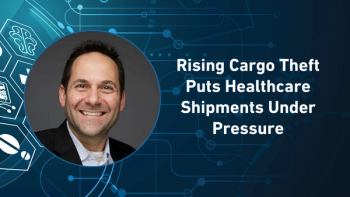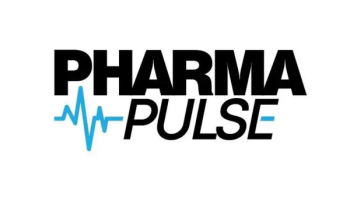
How Pharma Can Remain Competitive Amid Rising Healthcare Costs
In the final part of his Pharma Commerce video interview, Philip Sclafani, PwC's pharmaceutical and life sciences lead, discusses operational and pricing strategies pharma executives can adopt to navigate sustained cost inflation, including supply chain optimization, payer collaboration, and value-based approaches to ensure patient access and affordability.
In a video interview with Pharma Commerce, Philip Sclafani, PwC's pharmaceutical and life sciences lead, he describes how the One Big Beautiful Bill Act (OBBBA) is expected to significantly influence prescription drug spending by reshaping access and reimbursement within Medicaid, certain Medicare segments, and ACA exchange plans. The OBBBA introduces pressure on pharmaceutical revenues, particularly by limiting coverage for high-cost drugs in publicly funded markets. This could reduce patient access to specialty medications and diminish pharma sales in those sectors.
Simultaneously, broader market forces are also impacting prescription drug trends. On the private commercial insurance side, cost inflators like the rapid growth of GLP-1s and behavioral health treatments are emerging, while biosimilars act as deflators. The intersection of these trends—OBBBA and private market shifts—presents a complex environment for pharmaceutical companies.
To mitigate financial risks and preserve innovation, pharma firms are being pushed to accelerate R&D investment and pursue mergers and acquisitions (M&A) that bring in near-term revenue and long-term pipeline potential. There’s also growing interest in global licensing deals, including accessing drug pipelines from China for US or ex-China markets.
At the operational level, companies are responding to tighter margins by improving efficiency—through digitization, AI integration, and reevaluating commercial spend, such as Salesforce deployment and direct-to-consumer marketing.
Overall, Sclafani emphasizes that OBBBA is just one factor within a larger industry shift, and successful pharma companies will need to respond holistically—balancing cost containment, innovation, and strategic partnerships to adapt to this evolving landscape.
He also comments on balancing the demand for innovation with increasing payer pressure to control costs; the role biosimilars play in long-term cost containment strategies; operational and pricing strategies pharma executives should prioritize in order to stay competitive while ensuring patient access and affordability; and much more.
A transcript of his conversation with PC can be found below.
PC: With healthcare costs projected to remain elevated at 8.5%, what operational and pricing strategies can pharma executives prioritize to stay competitive while ensuring patient access and affordability?
Sclafani: It's a challenging time with health costs not really sustained on this increased path, and sometimes, I think the medical cost trend can be misinterpreted. It never has decreased in the time we've been doing this. It's just lower rates of inflation or higher rates, and we're in this period of high inflation.
I'd say one thing—if you look back over the time period when we see this consistent higher healthcare increase trend, we have tended to see legislation or major policy shifts try to come in place as sort of macro deal with those. I think it remains to be seen if we'll see another bill coming this year, and that's certainly one thing pharma’s looking out for. We had the OBBBA now, and maybe there'll be more. But historically, you look back at the highest cost times, the Affordable Care Act came, or during COVID, there was the Cares Act. Obviously, that was a once-in-a-generation event, hopefully limited, once in a 100-year event, hopefully, but we saw some legislation there.
I think that's one of the big watch outs that will both impact pharma and pharma will respond to is because we're in this period of multiple years of higher almost getting up to 10% costs increases, might we see some more government intervention? Potentially, outside of that, there are levers we expect to see pharma companies pull. I think I mentioned a few before, but thinking about optimizing commercial operations to be as lean and tech-driven as possible, that's going to take some time in different areas, but optimizing the supply chain is probably a very timely question. Thinking about the tariffs that were just announced in the EU and so far, expect to impact pharmaceutical products, that's another major inflator. Pharma will have to look at strategies to onshore, in order to optimize the supply chain, things like that, to just even prevent terrorists from further raising prices in the market.
We think about really focusing on innovation. I think pharma companies already spend a lot of time on health economics and what it means. There's no question that the direct cost of a pharmaceutical, a prescription drug, increase cost as soon as it's dispensed and taken by the patient. The goal, though, is that will get those patients stable to whatever the clinical goal is, which will have an impact on health economics and costs going forward. Engagement with payers and PBMs is always critical as much as possible, trying to get to the collaborative solutions and less back and forth over prices and rebates.
It's always going to be there, but what's the right balancing act? What is the population that should be insured and covered for this treatment at that negotiated price that's going to get there? I think for pharma, if you look at it, there is no way to price increase your way out of these challenges; there are price protections and commercial agreements. There are CPI-U penalties, Medicaid, and now, Medicare inflationary penalties. There's very limited value in increasing prices. It's really focused on, how do I get to more efficient operations on the L side of the P&L, and how do I get to the right sort of coverage and value equation with different payers and PBMs here in the US, not too dissimilar from what happens in a lot of European countries. You have to do it a whole bunch of times here in the US, versus one national health technology assessment, all of that. We don't have that model here, but I think you're still assessing how many patients will be covered at what price, getting to what value.
Newsletter
Stay ahead in the life sciences industry with Pharmaceutical Commerce, the latest news, trends, and strategies in drug distribution, commercialization, and market access.




